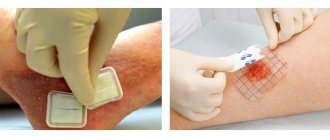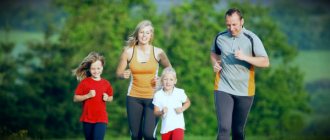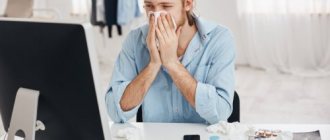Open wound - symptoms and treatment
The pathogenesis of wounds has been studied in detail. The treatment of wounds is based on it. The invariability of pathogenetic links during injury allows us to speak of the wound process and its course as a general complex of typical manifestations characteristic of any wound, regardless of its morphology.
There are different classifications of terminologies and phase durations, but Ross's classification has earned worldwide recognition. According to it, there are three phases of the wound process:
- inflammatory phase;
- proliferative phase;
- reorganization phase.[11]
Inflammatory phase
In the first phase, an acute vascular reaction occurs, characterized by:
- vasospasm (narrowing of arteries and capillaries) for the purpose of local hemostasis (stopping bleeding);
- release of humoral coagulation factors, catalysts of local immune reactions.
The task of the inflammatory phase is to mobilize the body’s forces in order to localize the process and prepare for successful reparation (recovery) in the future.[12]
The second stage of this phase consists of the body eliminating (eliminating) damaged structures. The duration of these processes is from three to five days. After which the next stage of the wound process begins.
Proliferative phase
As the name implies, during this period the restoration of damaged and replacement of lost tissue begins.
In order to avoid “condomism” and a mechanistic understanding of the wound process, we note right away that the phases can intersect and run in parallel, being a single process, artificially separated for the purpose of convenience of study.[13]
As a rule, this phase lasts from several days to several weeks. There is a direct relationship with the amount of tissue lost during injury. The proliferative phase is based on the predominance of synthesis processes due to precursor cells.[14]
Reorganization phase
Considering the body’s limited capabilities for repair, regeneration occurs due to connective tissue, as the most universal and “suitable” substance for closing a defect with satisfactory plastic and functional effects. In this phase, fibroblasts and endothelial cells are active, which form tissue rich in collagen, permeated with newly formed capillaries. From the point of view of pathohistology, granulation tissue is formed. It becomes structured over time, having layer-by-layer differentiation and a tendency to form collagen bundles with the subsequent formation of fibrous tissue, more dense and suitable for integumentary function.[15]
Wound healing takes place in one of three ways: primary or secondary intention, or under the scab.[19]
Primary intention is the most favorable method of healing. However, it requires initial favorable conditions: a wound with minimal microbial contamination, tightly adjacent wound edges, and the absence of necrotic tissue.
Secondary intention is a wound healing option that is the opposite of the intention described above. This type of healing is common in infected wounds.[20]
Healing under a scab is healing characteristic of wounds with a large area but shallow depth. In this case, a process similar to healing by primary intention occurs, but oriented in the longitudinal plane. In addition, the wound surface is covered with a scab - a layer of dried blood, tissue fluid and detritus.[21] The scab serves as a biological dressing until the wound heals and epithelializes.
Types of wounds and their treatment
A wound is mechanical damage to body tissue, most often the skin, sometimes mucous membranes and internal organs. Wounds can be obtained at home, at work, especially often during physical labor, during games and sports. Falls, accidents, fights, animal attacks, and many other situations are accompanied by the appearance of wounds. It’s no coincidence that they rank high on the list of reasons to go to the emergency room.
Characteristic signs of a wound:
- divergence of edges in the damaged area (gaping);
- bleeding;
- pain.
Some wounds can be healed on their own at home, but often require qualified medical care to avoid purulent complications and ensure rapid healing.
Types of wounds
According to the severity of the wound, they are classified into:
- superficial—only the skin and/or mucous membranes are injured;
- deep - in addition to the skin, the soft tissues located underneath it, blood vessels, nerves, and internal organs are damaged. There are two types of deep wounds:
- penetrating—the wound channel ends in the cavities of the body (abdominal, pleural, pelvic, etc.), the internal organs located in them may be damaged, but not always;
- non-penetrating - the wound channel ends blindly in the soft tissues.
Superficial wounds can be treated independently; for deep, especially penetrating wounds, consultation with a surgeon is required.
Depending on the nature of the wound damage, there are:
- Pricked - they are characterized by a large depth with a small area of skin damage. Such wounds are inflicted with sharp long objects, such as a knife, an awl, or a nail. Puncture wounds can appear deceptively mild—they appear minor in appearance, the pain is mild, and there may be no bleeding at all. In fact, they are fraught with damage to deep-lying soft tissues, internal bleeding and suppuration - oxygen does not reach the interior, creating ideal conditions for the proliferation of anaerobic bacteria;
- Incised wounds are distinguished by smooth edges and shallow depth; They are applied by all types of flat sharp objects (blades, glass, sometimes even paper). The danger of incised wounds lies in damage to large vessels, nerves, tendons, internal organs, in other cases they heal quite quickly;
- Chopped wounds are similar to cut wounds, but they are inflicted by striking with a sharp object (saber, axe), so the cut is accompanied by a bruise, and there may be bone damage;
- Bruised wounds are inflicted with a blunt, heavy object, causing hematomas, sometimes internal ones. Skin lesions are usually small with minor bleeding;
- Lacerations have jagged edges, which makes them difficult to heal. They appear when a wounding object slides and simultaneously presses on the skin;
- Gunshot wounds are caused by bullets fired from a weapon. Due to strong pressure and burns, the skin, soft tissues, and bones are significantly damaged and do not heal well. In this case, the area of damage is small, and bleeding is insignificant.
An important characteristic of a wound is the presence of infection in it. Wounds made under sterile conditions are considered clean: these are surgical incisions performed by a doctor during operations. Wounds with purulent discharge are called infected, and all others are called contaminated. This means that microbes are present in the wound, there are no signs of an infectious process, but there is a risk of its development.
First aid for wounds
The wound must be properly treated immediately to reduce the risk of infectious complications and speed up healing:
- Remove dirt and foreign objects (chips, splinters, soil, etc.) from the damaged surface;
- Wash the wound with antiseptic solutions (chlorhexidine, hydrogen peroxide, which not only destroys germs, but also stops bleeding);
- If there is a lot of blood, apply a tourniquet or a pressure bandage to compress the damaged vessels; in this case, peroxide will not help;
- The edges of the wound can be treated with an alcohol solution of iodine or brilliant green;
- Apply an antibacterial healing cream to the cleaned wound surface and apply a sterile bandage on top.
When to go to the emergency room?
Professional medical help should be sought in the following cases:
- Deep wounds, suspected damage to internal organs, bone fractures;
- Severe bleeding that cannot be stopped on your own. If a tourniquet is applied, you also need to go to the hospital, since this is a temporary measure;
- Wounds with uneven edges;
- Heavy contamination, especially with soil, rust (high risk of tetanus);
- Signs of wound suppuration or deterioration of the patient’s well-being (fever, nausea).
When visiting on the first day, the doctor will perform primary surgical treatment (PST) of the wound: after anesthesia, he will remove dirt and damaged tissue, blood clots, and, if necessary, apply sutures. After this, a healing period begins, which takes on average 7-10 days.
For later visits, PSO is not performed; the wounds heal through suppuration or under a crust, which takes longer - about two weeks. Periodically, the doctor treats the wound, removing pus if necessary, and then applies bandages to speed up healing.
With severe defects, spontaneous healing may not occur. Then the patient is prescribed plastic surgery with a displaced or free skin flap.
Argosulfan® for wound treatment
Cream for external use Argosulfan® has a dual effect: antimicrobial and wound healing. The main component of the drug is silver sulfathiazole. When the ointment is applied to the wound, a chemical reaction begins, as a result of which silver ions and sulfathiazole are released. This is a gradual process, so the concentration of active substances remains at the desired level for a long time.
- Silver ions have a bactericidal effect - they kill bacteria by destroying their shell.
- Sulfathiazole has a bacteriostatic effect - it stops the formation of DNA in microbial cells, which is why they stop growing and multiplying.
Thus, Argosulfan® has both a bactericidal and bacteriostatic effect, acting on most gram-positive and gram-negative bacteria.
Argosulfan® cream under the dressing maintains a moderate level of moisture on the wound surface, making dressings less painful.
Stimulation of cell division and metabolic processes in them promotes wound healing and reduces the likelihood of the formation of rough scars. Advertisement RUS-DRM-ARG-NON-09-2018-1319
Types of abrasions and wounds
We encounter cuts and all kinds of abrasions in everyday life. An abrasion is damage caused by mechanical friction against a rough and rough surface, often hard. This may be the result of a fall on asphalt or gravel.
The abrasion may be superficial, in which case only the epidermis is affected. The area turns red and swells a little. If the injury is deeper, then not only the epidermis is damaged, but also the capillaries, which leads to pinpoint bleeding, droplets of blood are released, but most importantly, the person experiences severe pain.
A cut is a shallow cut wound. With such an injury, either only the skin is damaged, or the layer of fatty tissue is affected. In such cases, bleeding occurs, the intensity of which will be determined by the depth of the cut and the number of damaged vessels.
Wounds can be superficial or deep, and large vessels can even be damaged. In this case, severe bleeding occurs. Wounds may be accompanied by bruises and bruises. In addition, dirt, various objects, earth, etc. often get into the wound.
Complications of wounds
- home
- Diseases and treatment
- Complications of wounds
Wounds can be accompanied by a variety of complications, both immediately after the wounds are inflicted and in the long term. These include:
- Gray - accumulation of exudate in the residual cavity of the wound. Its infection leads to suppuration of the wound. Requires timely evacuation.
- Wound hematoma - formed due to incomplete stopping of bleeding. Serves as a potential source of infection. A tense hematoma compresses the surrounding tissues and leads to ischemia. The hematoma must be removed by puncture or revision of the wound.
- Necrosis of surrounding tissues - develops when the blood supply to the corresponding area is disrupted due to tissue trauma during surgery or improper suturing. Wet skin necrosis must be excised due to the risk of deep accumulations of pus. Superficial dry necroses of the skin are not removed, as they perform a protective function.
- their development is facilitated by a high level of contamination (contamination of the wound) and high virulence (aggressiveness) of the microflora that has entered the wound, the presence of foreign bodies in the wound, necrosis, accumulations of fluid or blood, chronic impairment of local blood supply, general factors influencing the course of the wound process, and also late surgical treatment. It is the patient’s refusal to seek specialized help in a timely manner that can lead to serious complications.
Suppuration with subsequent development of abscesses, phlegmon
Most often, the development of pyogenic (pyogenic) wound infection occurs on the 3-5th day after injury, less often - at a later date - on the 13-15th day. Anaerobic infection can develop very quickly; in fulminant forms, it appears within a few hours after injury. The first symptoms are thickening, redness and pain. Increasing pain in the wound area is an early, but, unfortunately, often ignored sign of the development of infection.
Adequate surgical treatment is necessary: the wound is opened, the pus is removed, thoroughly washed, after which, if indicated, it is drained with tubular drainage and tamponed with a material that has sorption properties. After cleansing the wound and the appearance of granulation tissue, secondary sutures are applied or the edges of the wound are tightened with an adhesive plaster.
- Dehiscence of the wound edges can occur in cases where the applied external forces exceed its strength. Most often, the divergence of the skin edges of the wound occurs during the first month after its suturing, precisely during that period of time when the sutures have already been removed and the formation of cross-links of collagen fibrils has not been completed. Even with normal metabolism, a postoperative scar in one month acquires only 35% of its original strength and never becomes stronger than the tissue it replaced. Dehiscence of the wound edges is eliminated surgically.
- Suppuration of postoperative wounds . Among all postoperative complications, surgical infection ranks first and accounts for 32-75%. After planned surgical interventions, infectious complications occur in 6.5% of cases, after emergency ones - in more than 12%
Manifestations of postoperative wound infection do not have specific symptoms relative to any other wound infection. Local symptoms include swelling and hyperemia (redness) or cyanosis (blueness) of the skin up to the development of necrosis, severe pain at rest and on palpation in the wound area, fluctuations in places of greatest accumulation of exudate, wound discharge, divergence of wound edges, slowdown of reparative processes in wound.
In patients weakened by severe surgery, concomitant pathology or trauma, these symptoms may be mild.
In case of total suppuration of the wound, the sutures are completely removed, the edges of the wound are separated, exudate or hematoma is evacuated, non-viable tissue is excised, pockets and leaks are opened. In most cases, in the early stages of the disease, these measures are enough to stop the purulent process. The wound is subsequently maintained openly. Dressings are carried out daily using iodophor solutions, water-soluble ointments or draining sorbents. After the signs of local inflammation have been relieved, secondary sutures are applied to the wound or the edges of the wound are closed with adhesive tape, which significantly reduces the treatment time.
- Malignization . Long-term chronic wounds can be complicated by malignancy (malignancy). The diagnosis is confirmed by a biopsy of wound tissue, which can be performed in our hospital. Further treatment tactics are determined individually, depending on the results of the histological examination.
Consultation on paid services Show phone numbers
First aid for a child for superficial wounds
When such a situation arises, parents ask themselves: “How to treat the wound? How to properly treat a wound? What is the best remedy for treating a wound?
Before helping a child, parents need to wash their hands with soap and use an antiseptic. Next, in this sequence, you need to follow a number of instructions and actions:
- Assess the extent and nature of the damage. It is very important to understand whether the baby has a deep or superficial wound.
- Rinse and stop bleeding. Hydrogen peroxide is best suited for this purpose. You can also use a solution of furatsilin and chlorhexidine.
- Next, you can treat the skin with a drying antiseptic, for example, iodine solution or brilliant green.
- Apply an aseptic (clean) dressing.
- In the future, it is important to change the dressings regularly. It is also possible to use ointments and creams discussed earlier, which will speed up the healing process.
In case of deeper defects, heavy bleeding, wounds that have been bitten and contaminated with soil or old metal, you must urgently contact a surgeon.
Wounds are quite common, especially in young children. The task of parents is to provide timely assistance to the child in order to prevent infection. You must have a minimum first aid kit in your first aid kit. Do not self-medicate and, if threatening injuries occur, consult a doctor.
Products for treating wounds in children
Below we list the most popular and affordable means for treating superficial wounds in children:
- Iodine. Suitable for superficial abrasions, but not for deeper injuries.
- Diamond green.
- Hydrogen peroxide. It is the drug of choice for first aid in the treatment of superficial abrasions in children. Allows you to clean abrasions and scratches well. An equally important property is stopping bleeding.
- Furacilin. To prepare a solution for topical use, dissolve the tablet in water.
- Miramistin. It is also an antiseptic for topical use. Allows you to prevent suppuration. If a purulent process occurs, it allows you to fight it. A pleasant bonus will be the possibility of using this remedy for acute respiratory viral infections, sore throats and pharyngitis in children.
- Chlorhexidine.
An antiseptic helps prevent suppuration.
To speed up healing, ointments and creams can be used such as:
- Levomekol;
- Betadine;
- Vishnevsky ointment;
- cream Bepanten plus.








